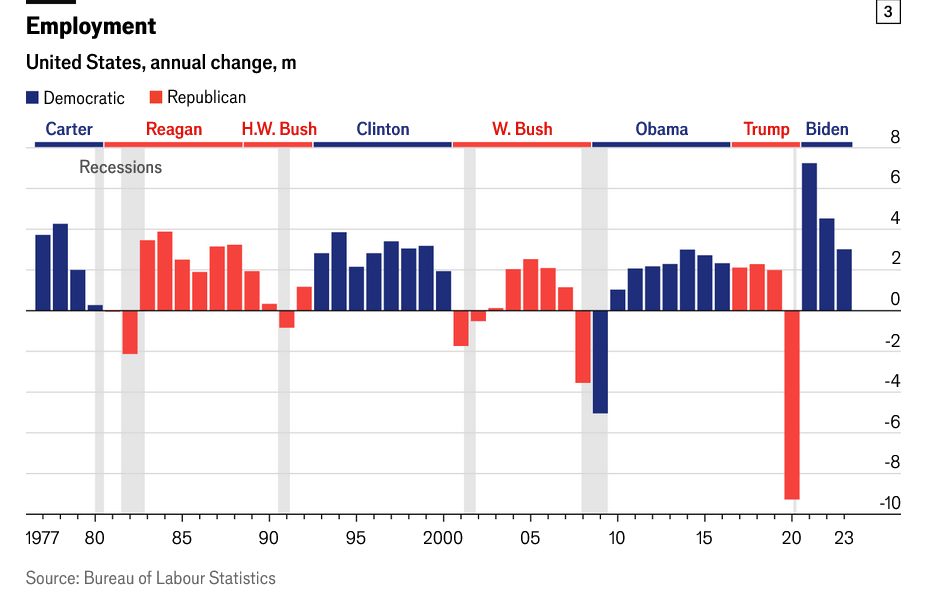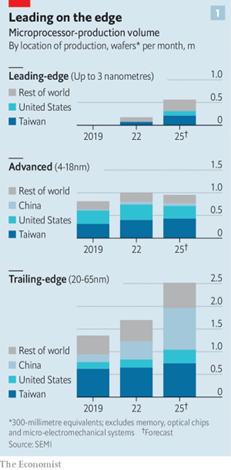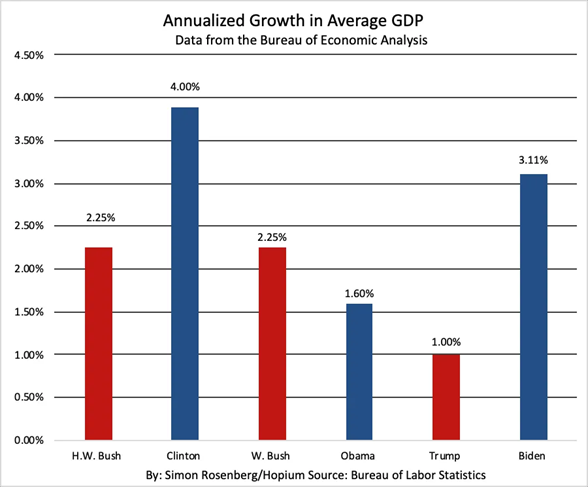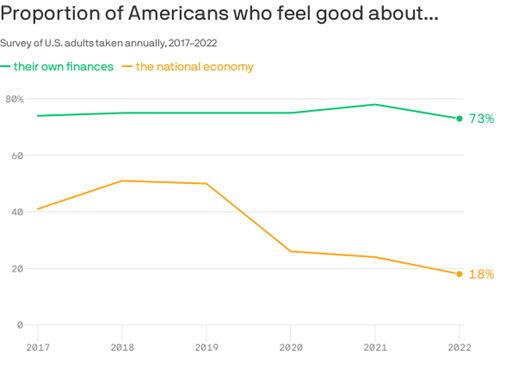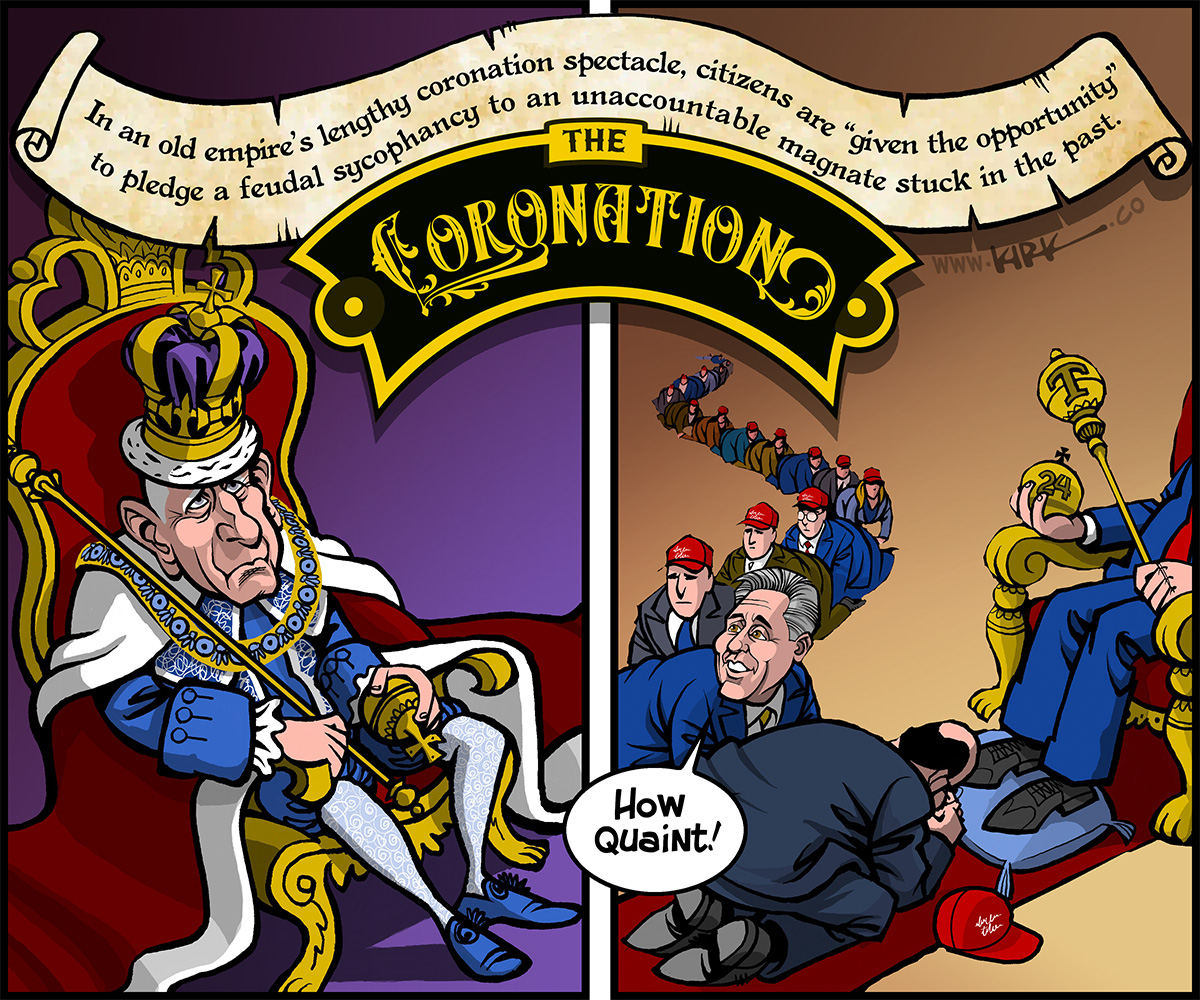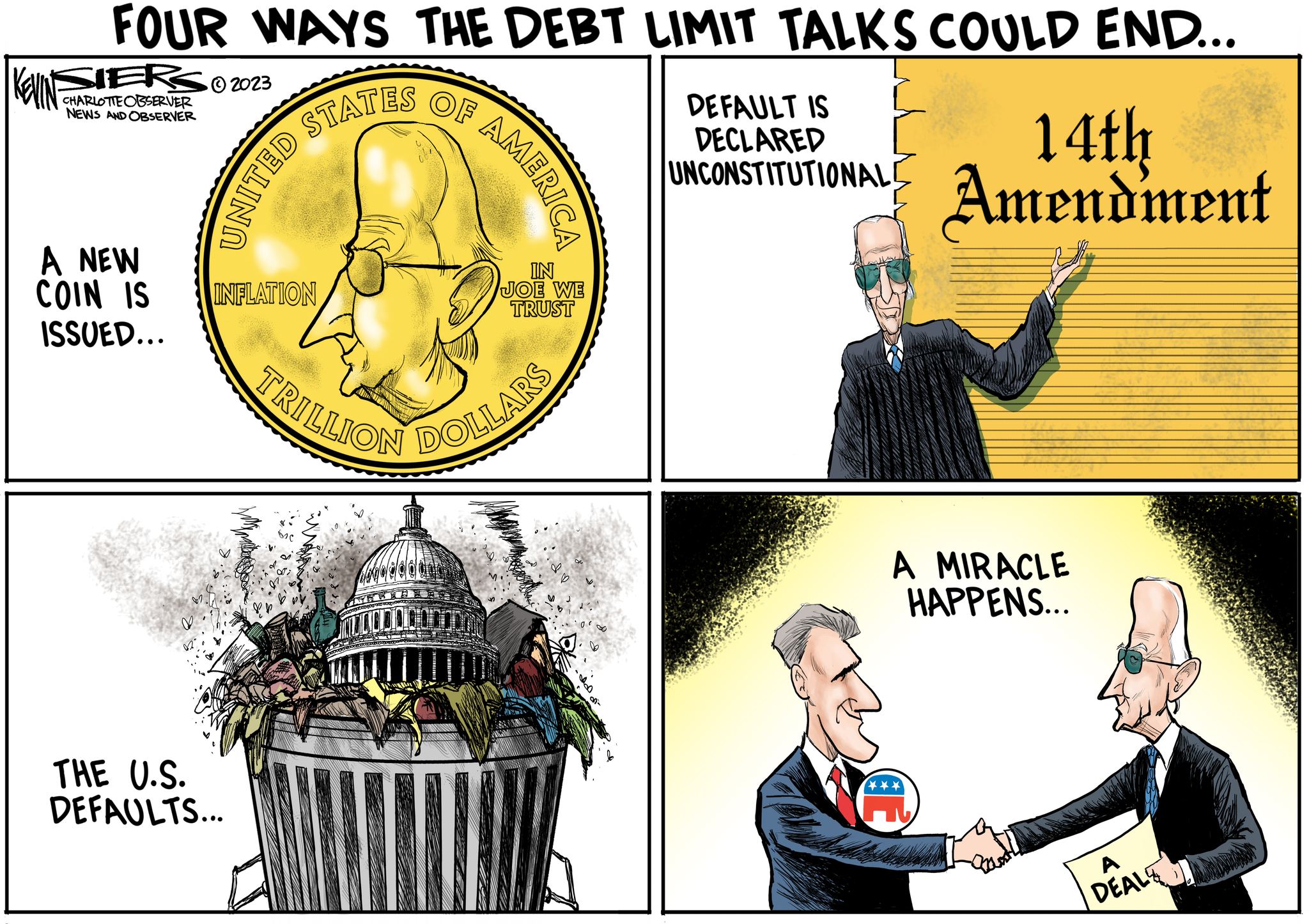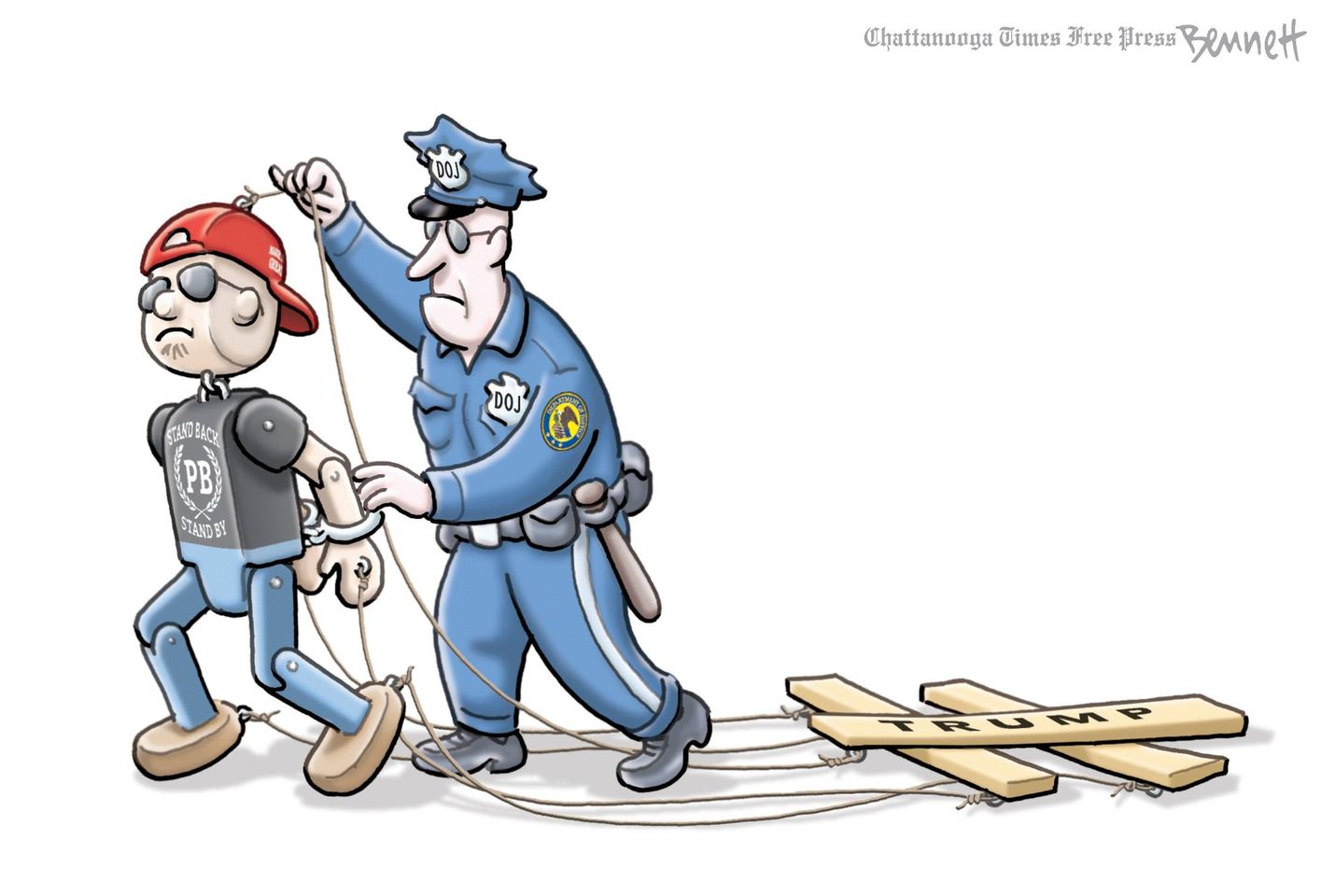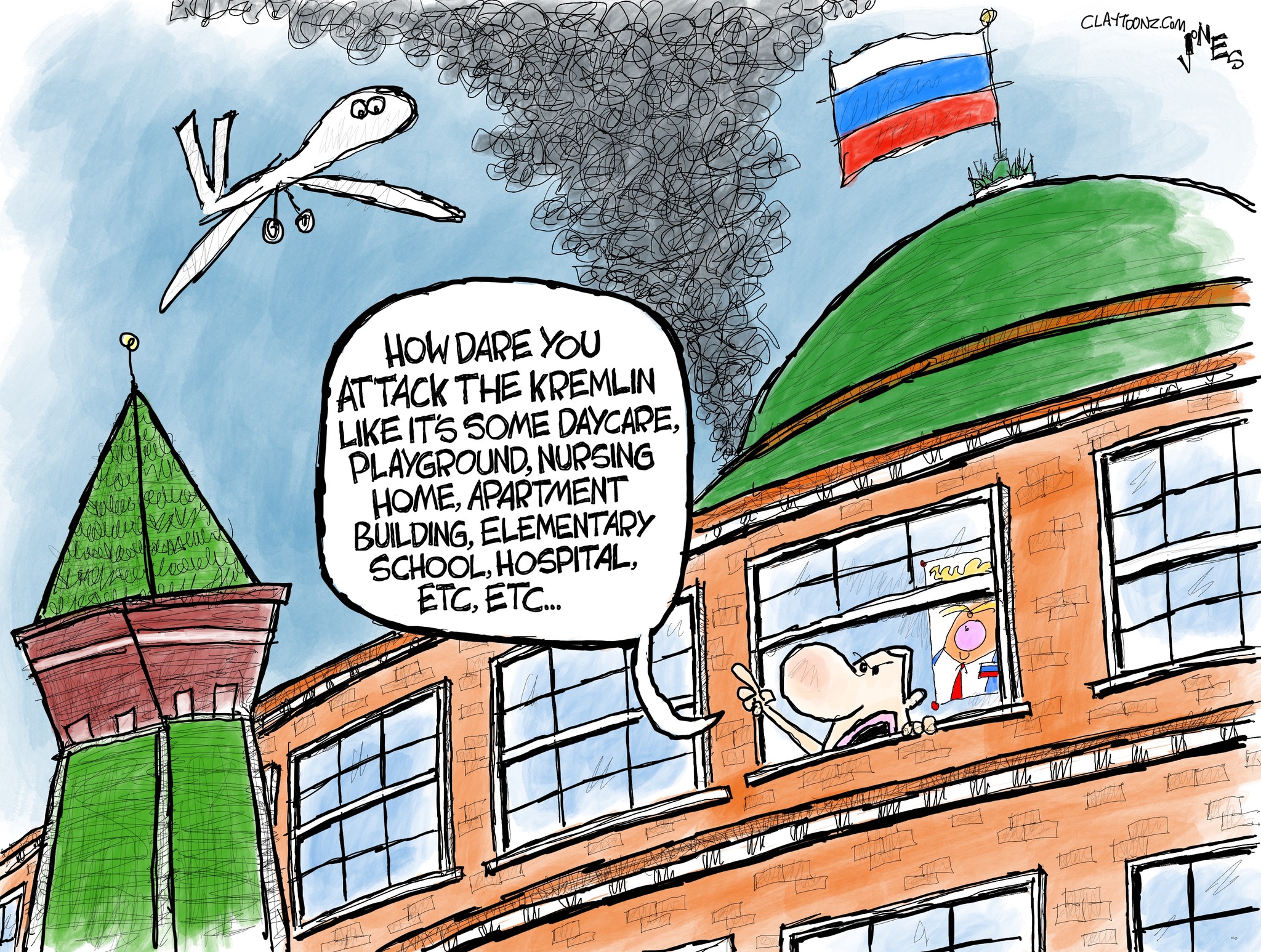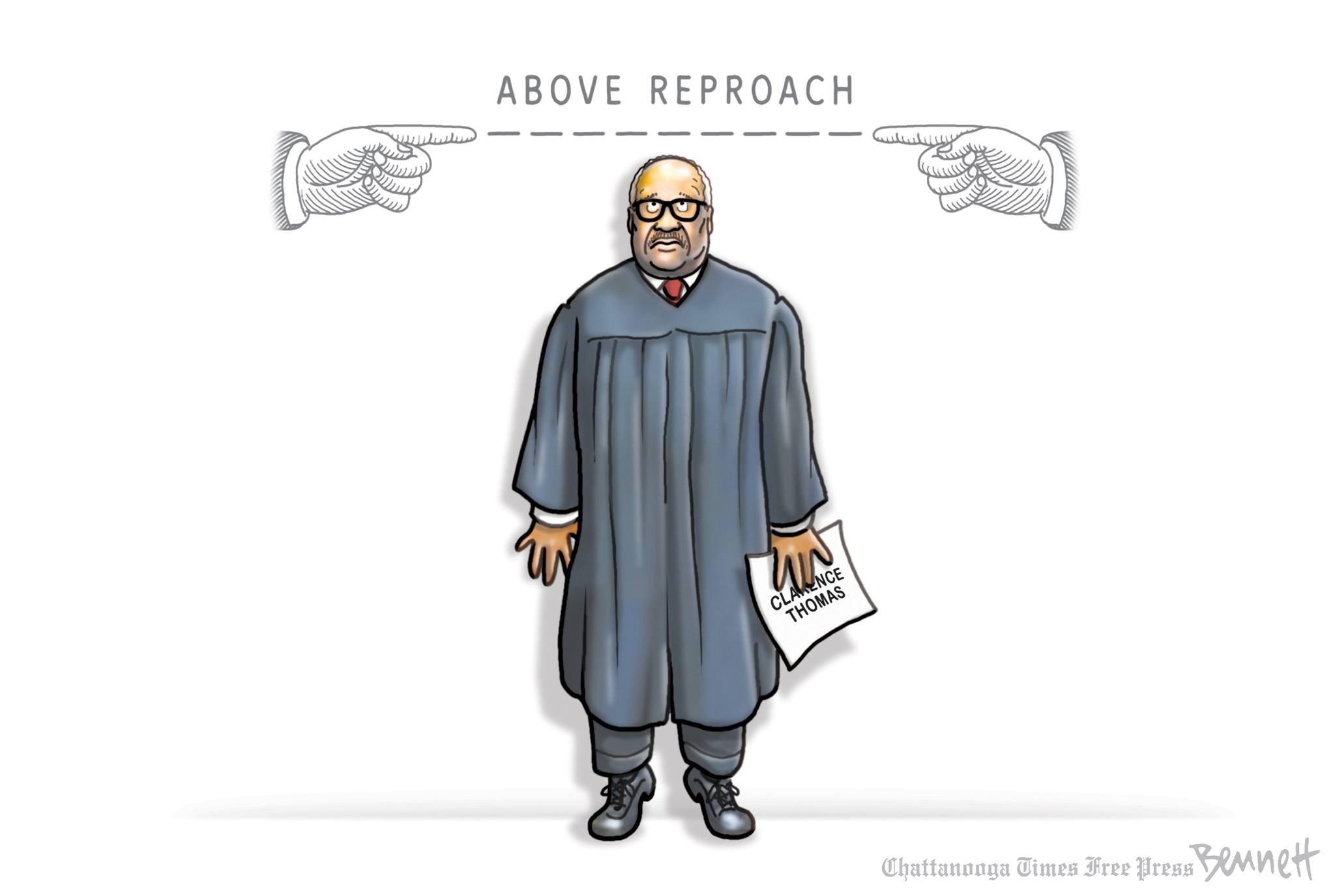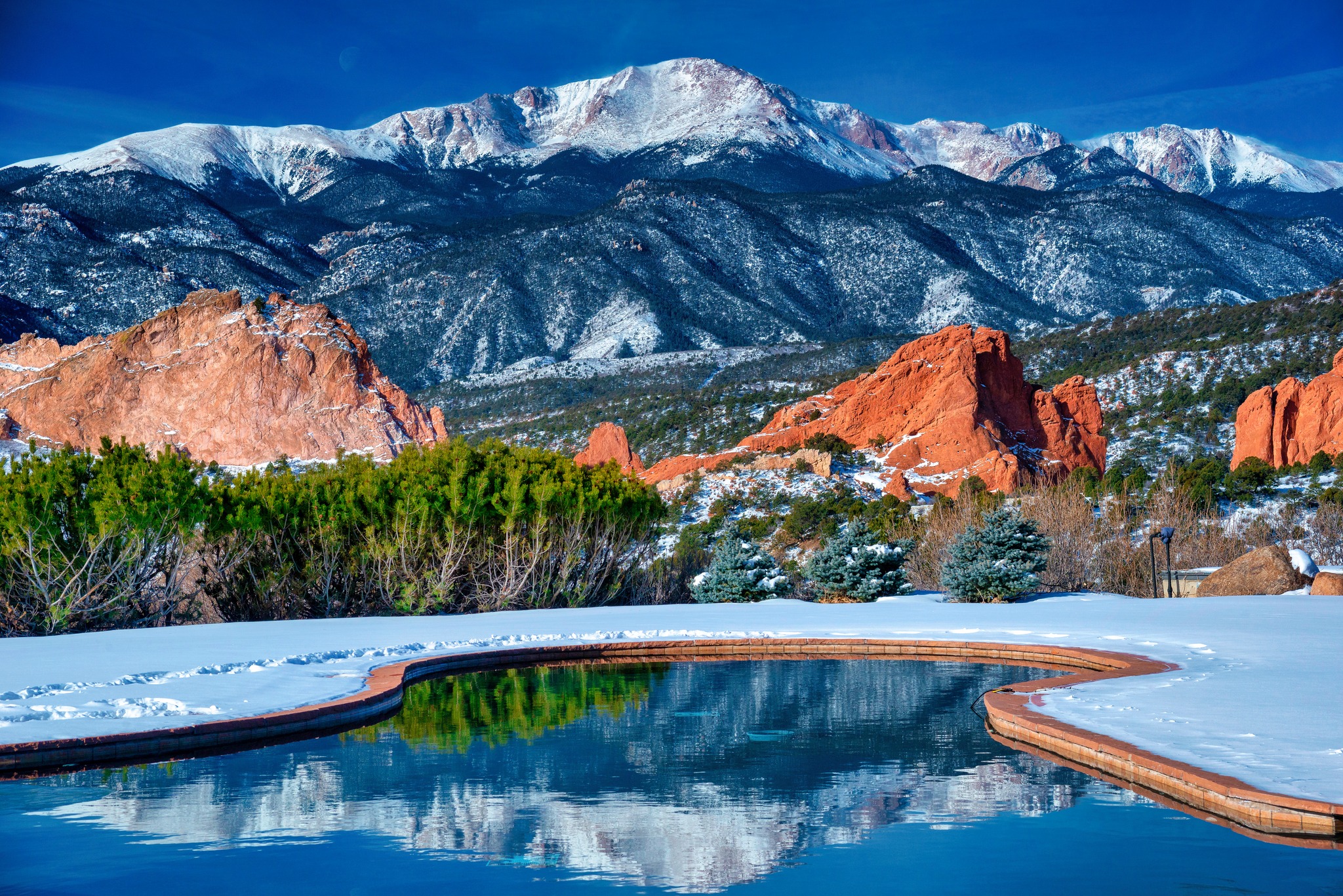Cartoons this week were mostly about Vance failing to answer the “Who Won?” question. Here’s one Wrongo liked:
There’s always something in October:
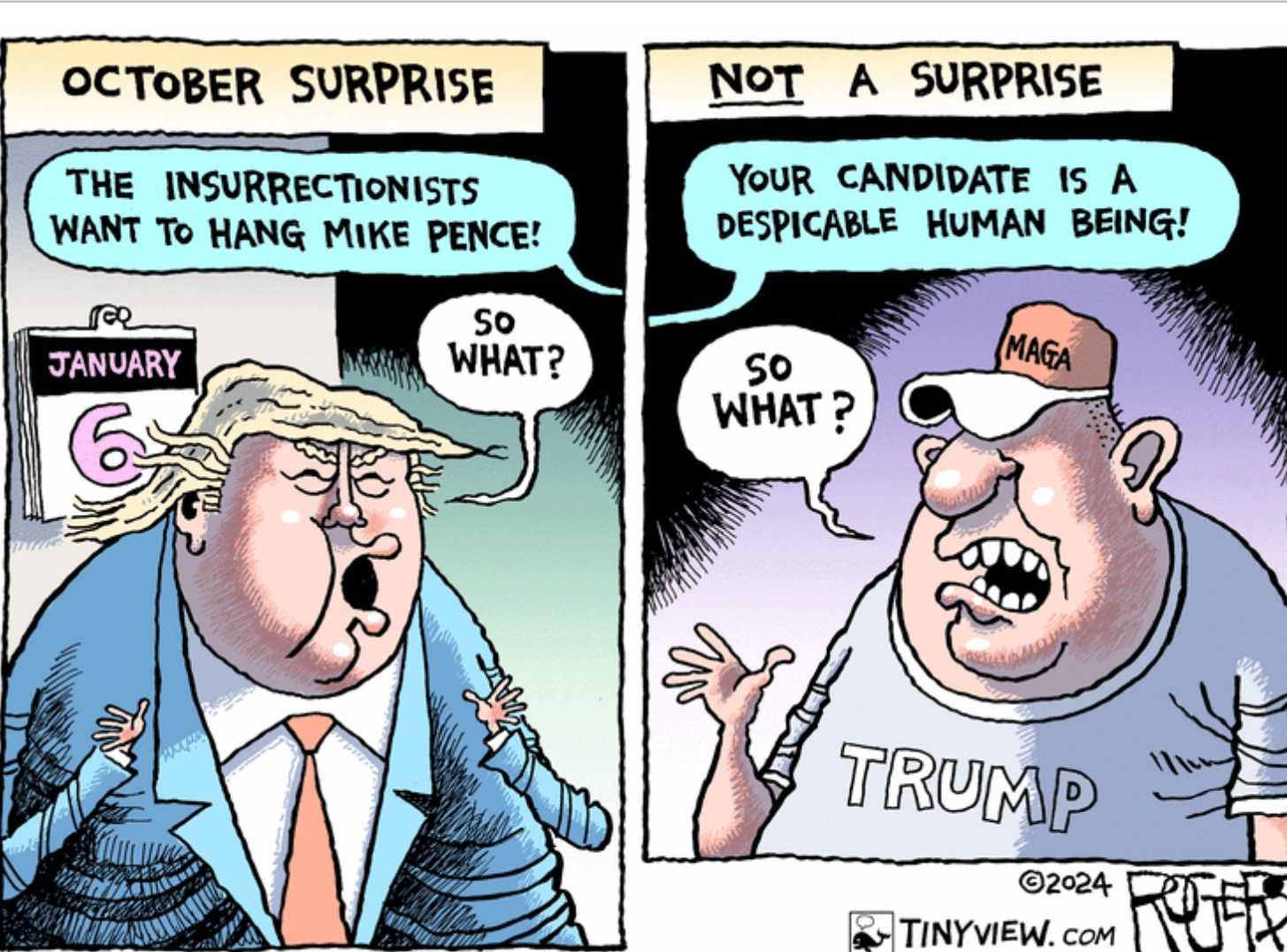
Wrongo wants to update his last column about why Harris needs to speak with more empathy to Gen Z and younger voters. Friend of the Blog John S. left this comment:
“I believe Harris is speaking but perhaps not loud enough or Gen Z isn’t listening. Her plans do include downpayment money for new housing, tax incentives for builders to sell to first time home buyers, 3 million new homes constructed, business startup credits, earned income credits for low wage earners, newborn tax credits, food price regulations, and reduction of medical debt. Maybe you can say it won’t be enough or that some of these things can’t be implemented but nonetheless they are in “the plan”. Perhaps if her message was stronger on social media, as you mentioned in another column, the “Z’ers” would listen.”
He’ s right but Harris like most Dem politicians, isn’t offering sufficient “feel your pain” context to get people to listen. Obama was one of the few Democrats to place policy in a human context, but most of the time, the Democrats are relying on a laundry list of policies that may or may not ever be enacted.
America had good economic news yesterday, but no Republican was willing to cede that to Biden or the Democrats. Sen. Rubio (R-FL) claimed in a post on Twitter/X that the great jobs numbers were “fake” because past months had to be revised (most jobs reports are revised in subsequent months).
It’s true that the economy added jobs. But most were low-income service jobs. Meanwhile, the pathways to the middle class, manufacturing and white collar jobs, actually shrank. The Gen Z and younger workers suspect that the American Dream is fading because middle class jobs are going away, and they’re precisely correct in that intuition.
The GenZ’ers can’t square their lived reality with the commentary that comes from on high, particularly regarding the economy. Over time, they’ve come to distrust institutions. That’s true at a social level—levels of trust have cratered over time. And this is a key reason why this gulf between what young people live, experience, feel, and the skin-deep recitation of the miracle of the “Booming Economy”. It doesn’t reach deeply enough into their lives.
Harris shouldn’t cede any of this ground to Trump. Wrongo quoted Vance during the VP debate:
- People are struggling to pay the bills. Times are tough.
- The American Dream is fading, and feels unattainable.
- We should stop shipping jobs offshore.
And Republicans understand the task at hand is to peel younger voters in swing states away from Harris. FWIW reports that a constellation of Right-wing groups are spending millions online to get their messaging in front of swing state voters. Probably the biggest line of attack being used against Harris has to do with inflation and the state of the economy: (brackets by Wrongo)
“For example, Duty to America is specifically targeting Gen Z and Millennial men in battleground states with ads bemoaning the state of the economy, saying: ‘According to…Harris, the economy is fixed [repaired]…at our age, our parents owned a home, had kids, saved for retirement, and we can barely buy groceries, gas, or pay our rent.’”
More:
“This ad is running across platforms like Facebook, Instagram, and Google, but also on Roku devices and streaming services where young people actually watch TV shows. Duty to America has spent the majority of its ad dollars targeting Michigan, Pennsylvania, Georgia and North Carolina.”
More:
“Similarly, Preserve America is running direct-to-camera video ads on Facebook and Instagram from a trio of white women who are complaining about high inflation and grocery prices, sometimes tying the issue to illegal immigration. You can browse through some of those ads here.”
FWIW adds a chart about ad spending: (note that the red and blue here are 100% pro-Trump spending)
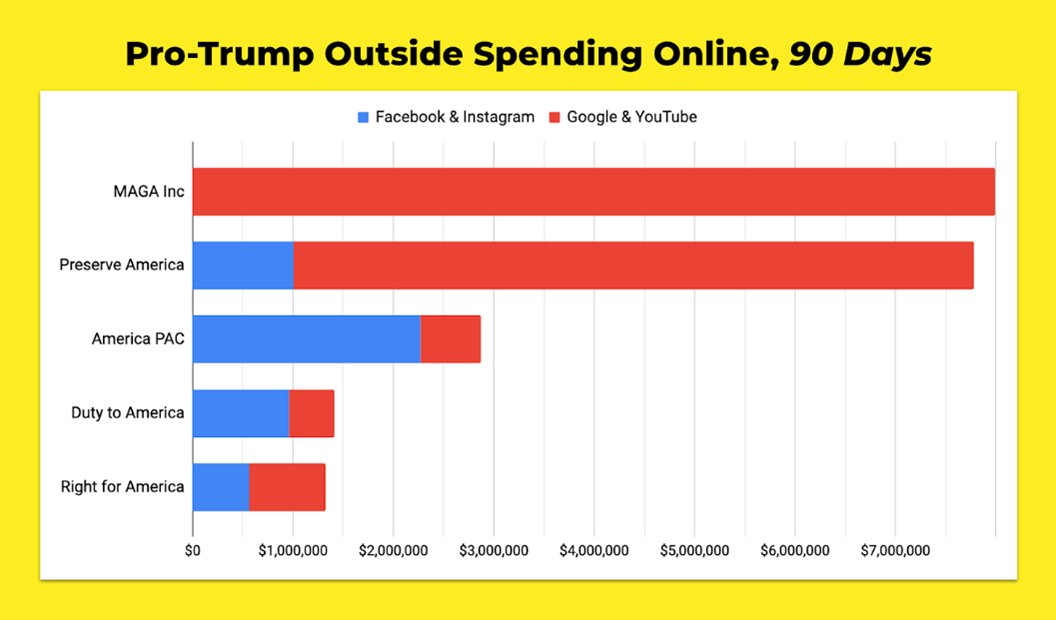
A few other groups have also emphasized economic attacks among younger members of the electorate. One from Our American Century says “Kamala Harris thinks young people are stupid” when it comes to the economy, and Right for America is also running with the “stupid” line.
FWIW notes that Harris is outspending Trump on Facebook and Instagram: Harris spent $8.1 million to Trump’s $1.1 million between September 21 to 28. Meanwhile, political campaigns spent $40.3 million on Google and YouTube ads last week, with Harris and affiliates spent $10.8 million to Trump’s $2.8 million.
Here’s a recap of spending by both campaigns:
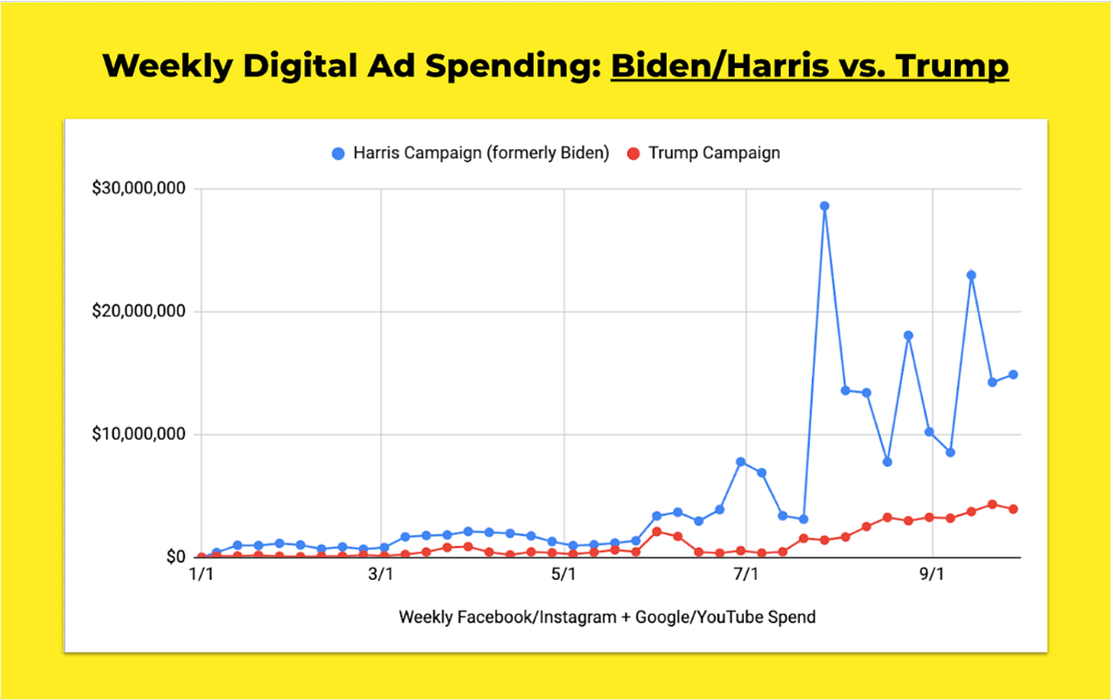
The Democrats instead should invest more money where the young people are. They should challenge the Republicans by admitting that things look pretty dire for Gen Z and younger people. That over time, the American Dream’s faded. That times are rough. That people are struggling.
They should use exactly those words like Vance did, because they’re the ones that count. They resonate. You have to hope that the Harris brain trust will match Trump’s initiative by spending some of this money targeting Gen Z and younger voters with empathetic messaging like the Republicans are already doing.
The policy details can come once they’re listening.


